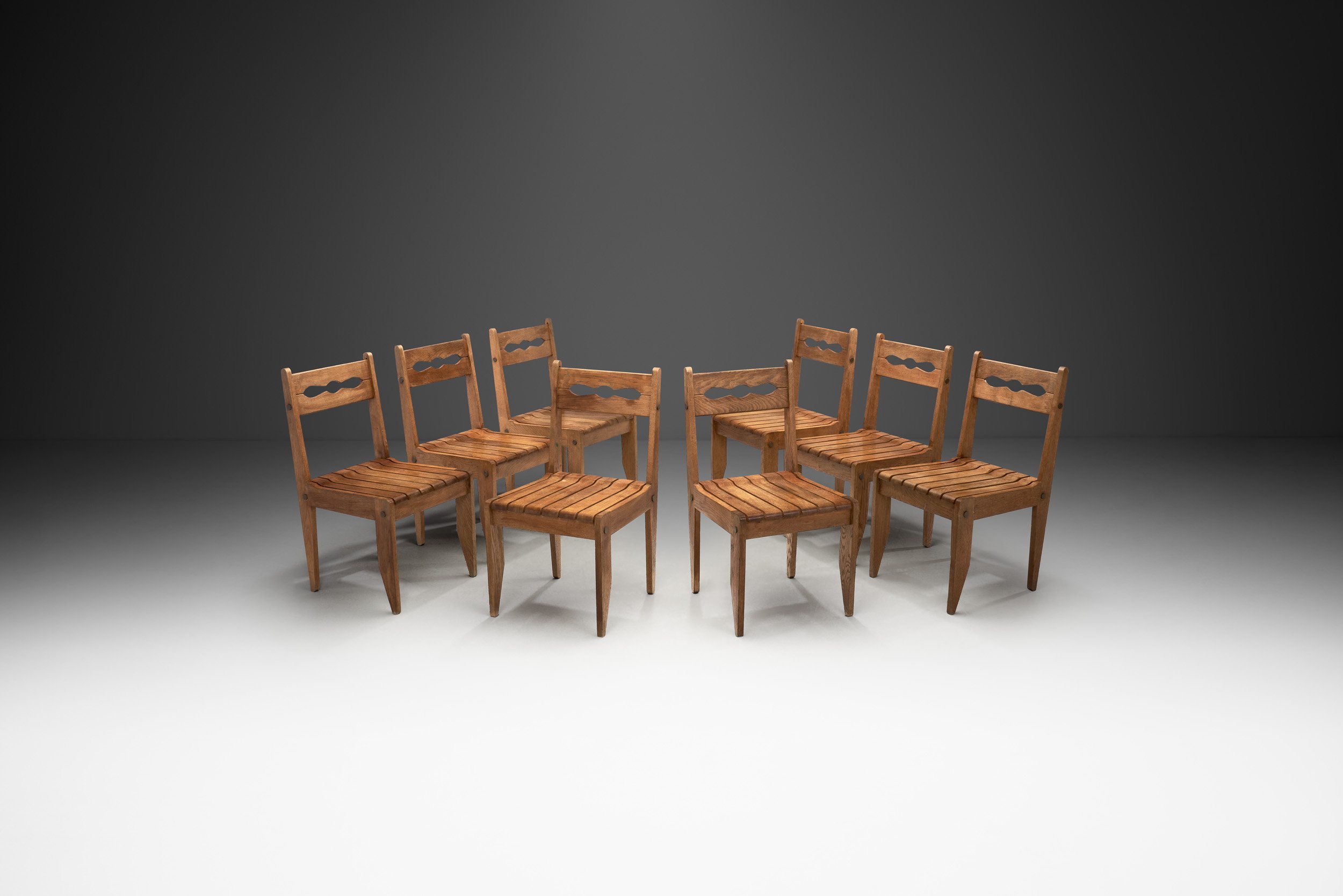Arne Jacobsen “Grand Prix” Chairs for Fritz Hansen, Denmark 1950s




















Arne Jacobsen “Grand Prix” Chairs for Fritz Hansen, Denmark 1950s
REQUEST PRICE HERE
Price category: 15,000 - 20,000 usd / eur
The “Grand Prix” chair is a model with graphic edge. It was introduced at the Designers’ Spring Exhibition at the Danish Museum of Art & Design in 1957. Later that year, the chair was displayed at the Triennale in Milan where it received the Grand Prix, the finest distinction of the exhibition. Originally known as the Model 3130, the chair was renamed after it won the prestigious price.
These celebrated chairs are part of the history that made Arne Jacobsen an admired and outstanding designer, whose furniture and other design work have become national and international heritage. The shells of this set’s chairs are made of laminated, moulded veneer, while the outer veneer is stained beech wood. The upholstery is an elegant leather with beautiful patina. The slim, tapered legs have a subtle curvature that complements the backrests’ shape. The design was created to be stackable, and the shape of the legs and back was originally created with functionality in mind. This set shows that multiple models presented together really enhance the visual quality and brilliance of the design. Jacobsen’s genius lied in his ability to create immediately recognizable, but simple designs that earned him fame and professional recognition as well.
Fritz Hansen’s cooperation with Arne Jacobsen began back in 1934, and this long-lasting partnership gave Jacobsen his own and Fritz Hansen’s names a place in the history of furniture. The attention to detail and the unique design of this set of six creates a bold and exceptional statement that makes the Grand Prix as relevant today as it was 50 years ago. The chairs of this set will blend elegantly into a wide variety of settings as a great example of furniture design that is able to influence and elevate an entire room by its mere presence and beauty.
Condition:
In good vintage condition. Wear consistent with age and use. Some cracks and marks on the leather. The chairs have their original leather upholstery. Each of our items can be re-upholstered by our in-house atelier in a fabric of choice. Please reach out for more information.
Dimensions:
18.11 in W x 18.11 in D x 30.7 in H; Seat height 17.71 in
46 cm W x 45 cm D x 78 cm H; Seat height 45 cm
About the designer:
The genius who made Danish design known to the world. Arne Jacobsen is undoubtedly one of Denmark's most prominent architects and is internationally recognized for his marvellous buildings and design - also including his clocks and watches. Arne Jacobsen's architecture is still admired internationally and many of his products are still being produced.
Arne Emil Jacobsen was born on 11 February 1902 in Copenhagen. He first hoped to become a painter, but would end up being admitted to the Architecture School at the Royal Danish Academy of Fine Arts, studying there from 1924 to 1927 under Kay Fisker and Kaj Gottlob, both leading Danish architects and designers. As early as 1925, the talented architect student was awarded an impressive silver medal for the Paris Chair, which was his very first piece of furniture at the world exhibition in Paris.
Jacobsen’s most famous project was the Royal Hotel in Copenhagen (1956-1960), for which he designed every detail from textiles and lamps to cutlery and furniture. The AJ lamps, designed for the Royal Hotel and manufactured by Louis Poulsen, are a fine example of his streamlined and elegant style. The cutlery designed for the Royal Hotel and produced by Georg Jensen, represents a stylish design that is still today much praised. Also, the famous Egg and Swan chairs were designed for the Royal Hotel. As often happened with Arne Jacobsen’s designs, they were initially realized for a certain project and only later put into serial production – the same happened for the AJ lamps, the cutlery and the furniture he designed for the hotel. Royal Hotel was an extremely important project for Jacobsen because he could finally put his theories of integrated design and architecture into practice.
For more than half of the twentieth century, Arne Jacobsen’s ideas shaped the landscape of Danish design, rippling out from Scandinavia to influence architects and designers around the world.
He managed to direct projects ranging from complex buildings like Danmarks National Bank to detailed challenges as humble as a special teaspoon for his cutlery set, working with a relatively small studio staff driven by an unquenchable need to create.
Jacobsen’s creative process centred on his strict consideration of detail. He brought his visions to life for patrons and builders with scrupulous, hand-painted watercolours. In any given year, Jacobsen managed to design what others might be happy to produce in five. ~H.












